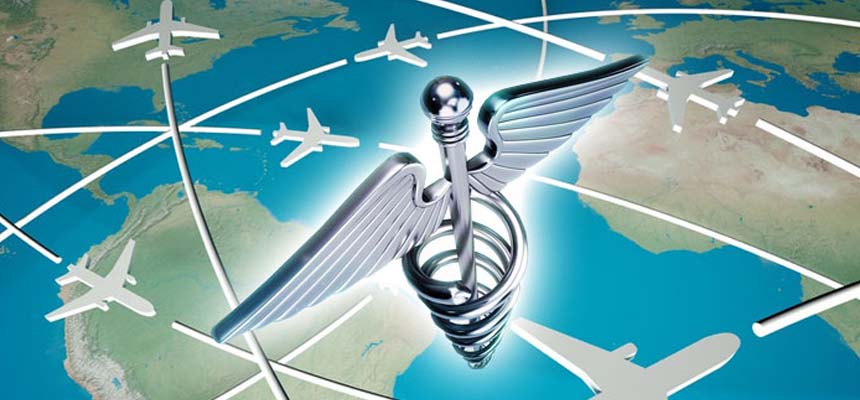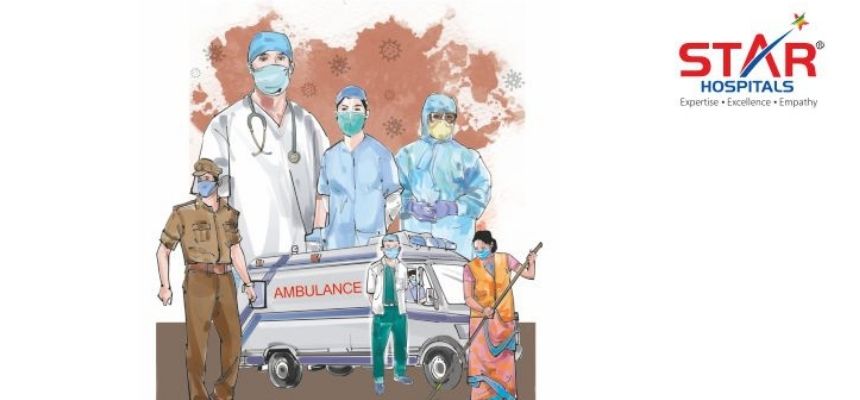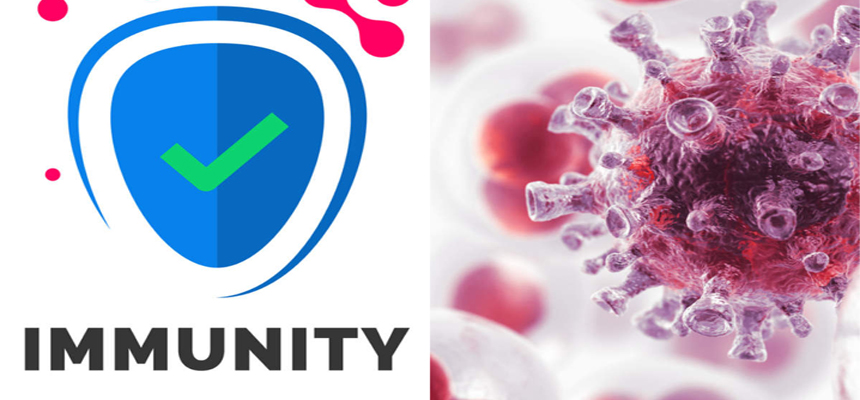Medical tourism booming in India

Mushrooming of quality healthcare services in India makes it the medical tourism hub for people all over the world, say experts
Medical tourism market is estimated at $5 billion and around 1.2 million tourists visit India for medical tourism annually, likely to cross $7 to $8 billion by 2020.
The government predicts that India’s healthcare industry could grow 13 per cent in each of the next six years, boosted by medical tourism which, industry watchers say, is growing at 25 per cent annually. The government has also started issuing M (medical) visas to patients and MX visas to the accompanying spouse.
Realizing the amazing potential medical tourism has Government of India started promoting medical value travel across the world in partnership with top hospitals. Government has also set up “National Medical and Wellness Tourism Promotion Board” to streamline issues like regulations, accreditations etc. to instill sense of confidence in foreign patients. Medical tourism also earns huge forex earning & Govt. of India –NITI Aayog has identified MVT as key driver for India.
“At a time when healthcare costs are growing all over the world, Indian hospitals are providing world class healthcare at affordable costs when compared to developed countries. Our country has highly educated, well trained & large pool of doctors / specialists and paramedical staff, who are delivering world class care. Hospitals like Apollo group has changed the healthcare scenario in India. They offer most superior technology & better medical outcomes compared to hospitals in USA / UK etc. at 1/3rd the cost,” explains Radhey Mohan, vice president, Apollo Health City, Hyderabad.
When quality healthcare for critical illness is not available in one’s country, people tend to travel to other countries for the same. The reason could vary from affordability to availability of good infrastructure. “India offers world class medical facilities which can be compared with any of the western countries today. This accompanied by affordable pricing makes India an unbeatable proposition for people looking at Medical treatment. Internationally accredited medical facilities along with highly qualified and experienced practitioners has been a major factor. Our doctors are among the best in the world and their high level of surgical expertise has evolved from many years of training,” explains Dr Abhinay Bollineni, vice president, Business Development, Kims Hospitals.
Talking about the marketing strategy, S. Roshan Singh, founder Med Sol Health Solutions LLP, and operations head,"Patient Health Pro”, says, “The Taj Medical Group receives 200 inquiries a day from around the world and arranges packages for 20-40 Britons a month to have operations in India. It also offers follow-up appointments with a consultant in the UK. Apollo Hospital Enterprises treated an estimated 60,000 patients. Apollo now has 46 hospitals with over 7,000 beds and is in partnership with hospitals in Kuwait, Sri Lanka and Nigeria. Besides Allopathy, Ayurveda, Sidha, Unani, Yoga, Acupuncture and Homeopathy popular among foreigners.”
Roshan adds, “The Medical Tourism Market Report: 2015 found that India was "one of the lowest cost and highest quality of all medical tourism destinations, Primary countries that prefer India include - US, UK, and Canada. Others include African countries, Bangladesh, Sri Lanka, and China. Bangladesh and Afghanistan dominate the Indian Medical Value Travel (MVT) with 34 per cent share.”
The medical tourism marketing plan includes understanding specific media to market products and services which will produce maximum results. Suman Sayani, Co-Founder & CRO - Ivaan health services says, “The strategy includes online, offline, social media, supply chain, events, print media, tv/radio channels, insurance companies, among other marketing methods. It is focused on creating the best marketing methods within defined budgets.”
In recent times, the country has been successful in challenging and competing with other medical tourism destinations like Costa Rica, Thailand, and Colombia and Singapore. “The advantage that India has over these countries is the communication part. Since most of these other nations function in non-English languages, and in India (although a diverse country), English is commonly used for business communication across all its regions,” adds Suman.
So, how does growth in private hospitals affect public health care in India? Dr Abhinay says, “There is enough space today for more growth for private and public healthcare services. While Private hospitals have grown primarily in Urban areas, a large number of our population still remains in rural areas where public healthcare plays a critical role. The urgent need of the hour is to ramp up the number of seats for doctors to ensure there are enough available to serve the vast majority.”
When asked, why is India gaining prominence for medical tourism? Roshan says, “Fantastic healthcare facilities in areas such as Cardiology, Oncology, joint replacement, orthopedic surgery, transplants and urology at a low price are key factors making India a favoured destination in terms of medical tourism. Procedures such as hip and knee replacement, face lift, and gastric bypass are far more affordable in India, including the cost of travel and accommodation, compared to the US.”
In order to allay suspicions regarding the quality of care in a developing country, Indian corporate hospitals are getting certified by international accreditation schemes. Corporate chains are working through agencies like IndUShealth, PlanetHospital and the Medical Tourist Company in Britain to build business across the West. The industry is also promoting the National Accreditation Board for Hospitals and has started the process of granting accreditation to about 70 hospitals across the country.
“Indian hospitals showcased their presence at World travel mart London, ITB Berlin & Arab Travel Mart etc. Indian hospitals have also gone for International Accreditations like JCI-USA, which is considered as Gold standard in health care quality certification,” concludes Radhey Mohan.
![]() Major Destinations in India
Major Destinations in India
Chennai, Mumbai, AP and NCR are the most favoured medical tourism destinations for the floating medical population who avail treatments in India, with Chennai having come to be known as India's health capital.
![]() Key Drivers
Key Drivers
![]() Cost advantage:
Cost advantage:
Complicated procedures in India cost one-tenth of that in the developed countries. A heart bypass surgery costs US$144,000 in the U.S., US$25,000 in Costa Rice, US$24,000 in Thailand, US$20,000 in Mexico, US$13,500 in Singapore, and US$8,500 in India.
![]() Limited waiting period:
Limited waiting period:
Unlike a waiting period of 15 days to one month in developed countries, India has minimal or virtually nil waiting period.
![]() International quality standards:
International quality standards:
Some of the well-established hospitals in India are Joints Commission International (JCI) accredited, depicting international quality services at comparatively lower costs.
![]() Skilled Medical Force
Skilled Medical Force
India is home to 1 Million Doctors and 1.5 Million Nurses. India is still short of 3 million doctors in next decade or so.
![]() Challenges
Challenges
The shortage of qualified medical professionals is one of the key challenges facing the Indian health care industry. India’s ratio of 0.7 doctors and 1.5 nurses per 1,000 people is dramatically lower than the WHO average of 2.5 doctors and nurses per 1,000 people. Additionally, there is an acute shortage of paramedical and administrative professionals.

 Disclaimer: Welthi.com does not guarantee any specific results as a result of the procedures mentioned here, and the results may vary from person to person.
Disclaimer: Welthi.com does not guarantee any specific results as a result of the procedures mentioned here, and the results may vary from person to person.









